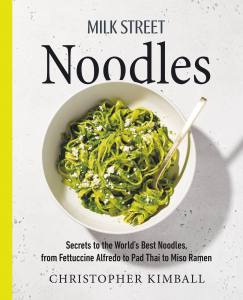Peruvian Spinach Pesto Pasta Recipe
Peruvian Spinach Pesto Pasta (Tallarines Verde) from Milk Street Noodles
Start to finish: 45 minutes
Servings: 4 to 6
Ingredients:
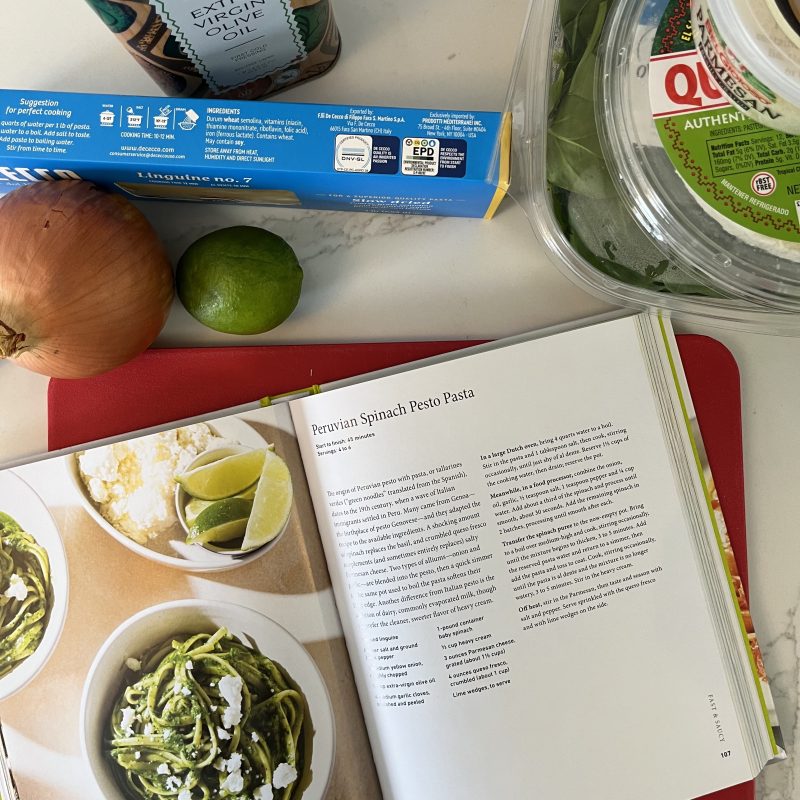
1 pound linguine
Kosher salt and ground black pepper
1 medium yellow onion, roughly chopped
1/2 cup extra-virgin olive oil
4 medium garlic cloves, smashed and peeled
1-pound container baby spinach
1/3 cup heavy cream
3 ounces Parmesan cheese, grated (about 1 1/2 cups)
4 ounces queso fresco, crumbled (about 1 cup)
Lime wedges, to serve
The origin of Peruvian pesto with pasta, or tallarines verdes (“green noodles” translated from the Spanish), dates to the 19th century, when a wave of Italian immigrants settled in Peru. Many came from Genoa—the birthplace of pesto Genovese—and they adapted the recipe to the available ingredients. A shocking amount of spinach replaces the basil, and crumbled queso fresco supplements (and sometimes entirely replaces) salty Parmesan cheese. Two types of alliums—onion and garlic—are blended into the pesto, then a quick simmer in the same pot used to boil the pasta softens their fiery edge. Another difference from Italian pesto is the addition of dairy, commonly evaporated milk, though we prefer the cleaner, sweeter flavor of heavy cream. The noodles typically are served as an accompaniment to steak or chicken, but we think their richness makes them delicious on their own.
RECIPE:
In a large Dutch oven, bring 4 quarts water to a boil. Stir in the pasta and 1 tablespoon salt, then cook, stirring occasionally, until just shy of al dente. Reserve 1 ½ cups of the cooking water, then drain; reserve the pot.
Meanwhile, in a food processor, combine the onion, oil, garlic, ½ teaspoon salt, 1 teaspoon pepper and ¼ cup water. Add about a third of the spinach and process until smooth, about 30 seconds. Add the remaining spinach in 2 batches, processing until smooth after each.
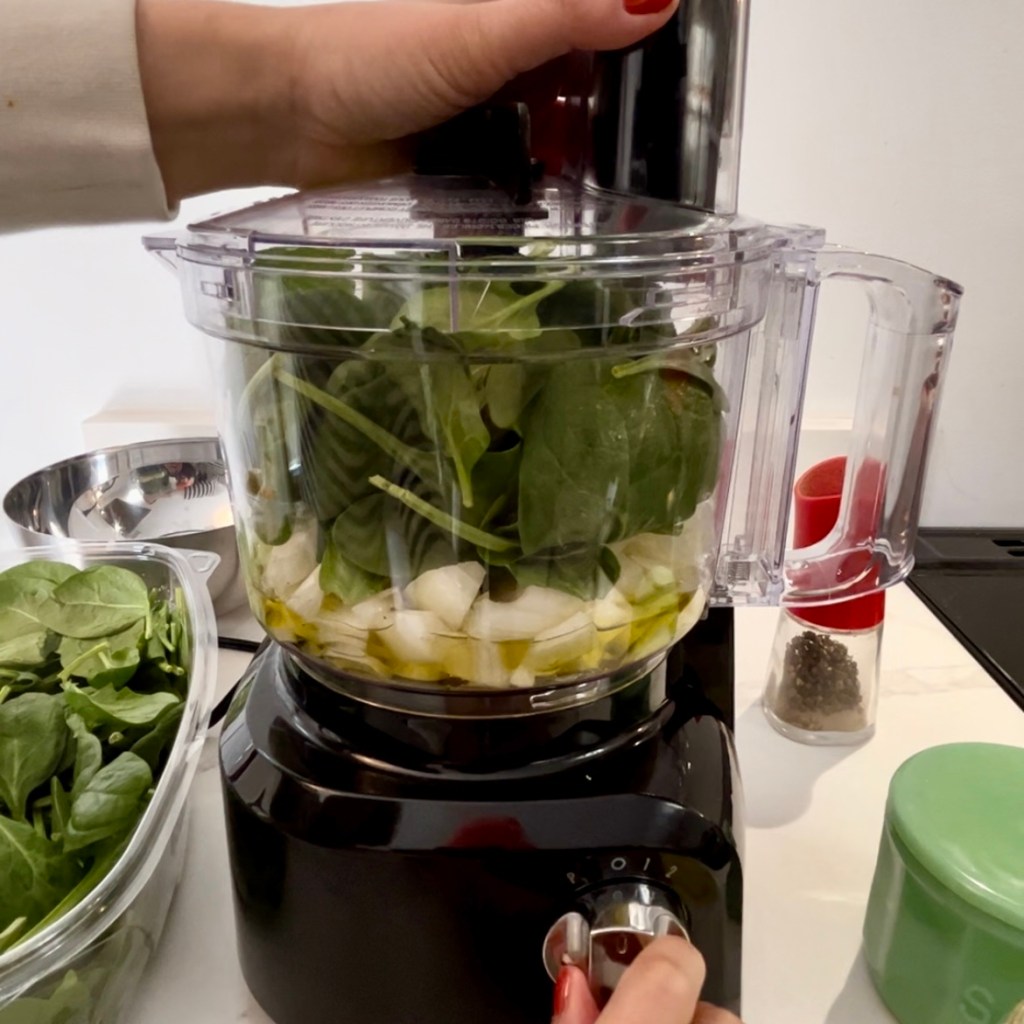
Transfer the spinach puree to the now-empty pot. Bring to a boil over medium-high and cook, stirring occasionally, until the mixture begins to thicken, 3 to 5 minutes. Add the reserved pasta water and return to a simmer, then add the pasta and toss to coat. Cook, stirring occasionally, until the pasta is al dente and the mixture is no longer watery, 3 to 5 minutes. Stir in the heavy cream.
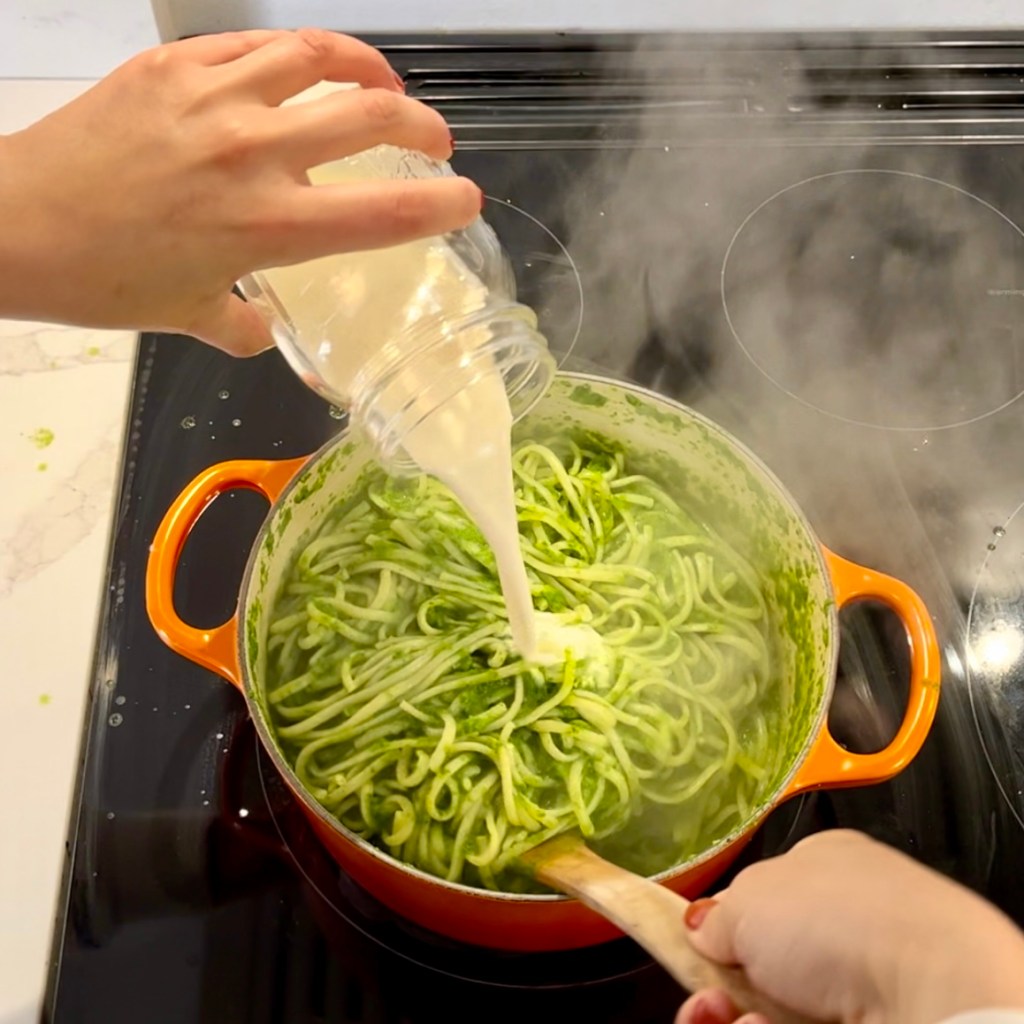
Off heat, stir in the Parmesan, then taste and season with salt and pepper. Serve sprinkled with the queso fresco and with lime wedges on the side.
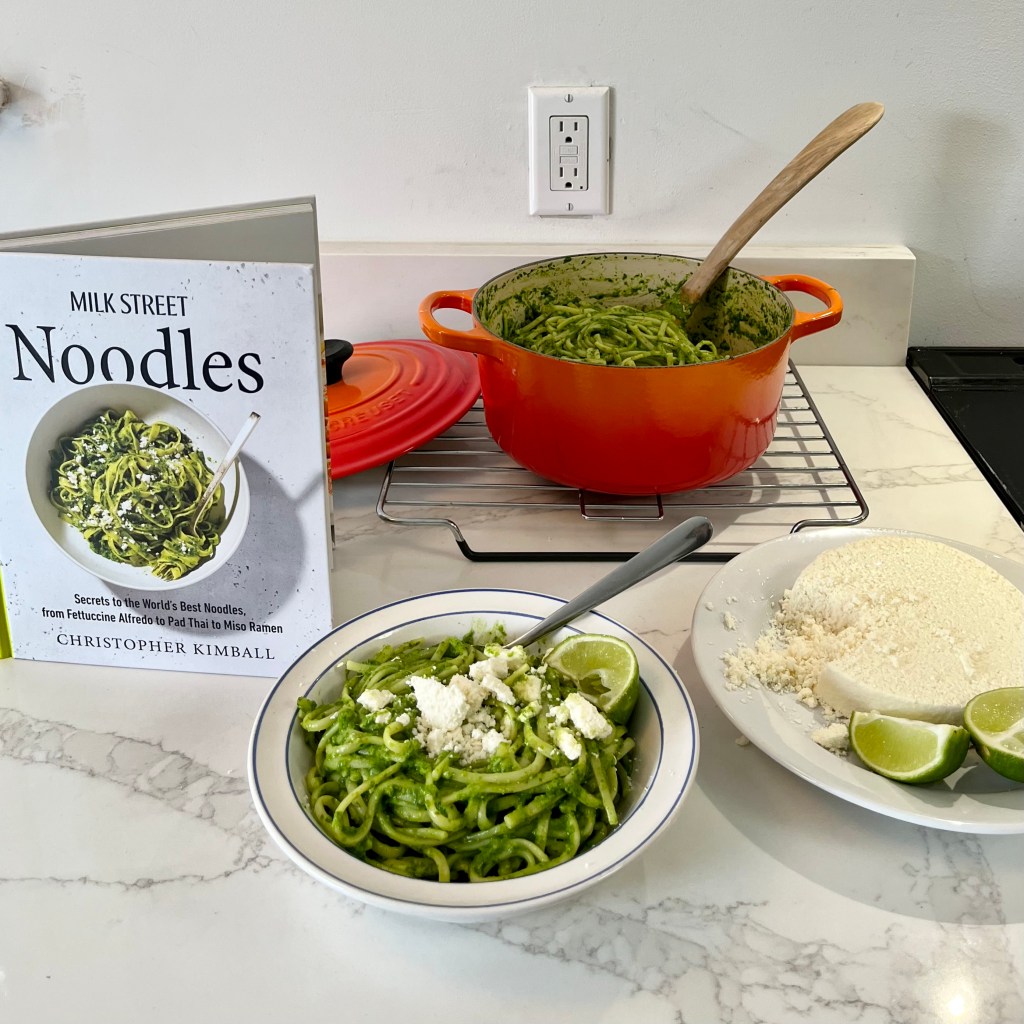
Nearly every culture serves some sort of noodle, from fettuccine, ramen and spaetzle, to lo mein, gnocchi and udon. So we traveled the world to learn the secrets to the best pad Thai, Italian ragu, spicy North African couscous and buttery Turkish noodles flecked with feta.
- In Italy, we were taught the real fettuccine Alfredo—so much lighter, simpler and more satisfying than what we knew.
- In Sapporo, Japan, we learned how to develop the deep umami flavors of miso ramen with minimal time and effort.
- And from Ho Chi Minh City to Lima, we learned the art of the quick noodle stir-fry, from Vietnamese shrimp noodles to Peruvian chicken and pasta
We include guides to using the noodles you have on hand, and show how to make classic noodles from scratch—from homemade udon and hand-cut wheat noodles to fresh egg pasta, orecchiette and potato gnocchi.
What’s for dinner? Use your noodle.
